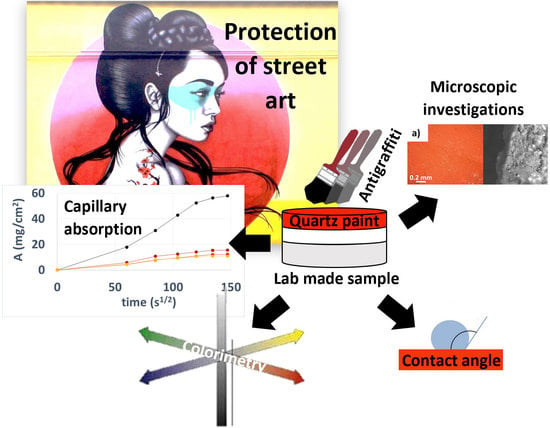Protection of Urban Art Painting: A Laboratory Study
Abstract
:1. Introduction
2. Materials and Methods
3. Results and Discussion
4. Conclusions
Author Contributions
Funding
Institutional Review Board Statement
Informed Consent Statement
Data Availability Statement
Conflicts of Interest
References
- Guerrero Balarezo, M.L.; Karimi, K. Urban art and place. Spatial patterns of urban art and their contribution to urban regeneration. In Proceedings of the 24th ISUF International Conference, Valencia, Spain, 27–29 September 2017; Book of Papers; Editorial Universitat Politècnica de València: Valencia, Spain, 2018; pp. 587–597. [Google Scholar]
- Mezzadri, P. Contemporary murals in the street and urban art field: Critical reflections between preventive conservation and restoration of public art. Heritage 2021, 4, 2515–2525. [Google Scholar] [CrossRef]
- Macchia, A.; Ruffolo, S.A.; Rivaroli, L.; Malagodi, M.; Licchelli, M.; Rovella, N.; La Russa, M.F. Comparative study of protective coatings for the conservation of Urban Art. J. Cult. Herit. 2020, 41, 232–237. [Google Scholar] [CrossRef]
- Bertasa, M.; Ricci, C.; Scarcella, A.; Zenucchini, F.; Pellis, G.; Croveri, P.; Scalarone, D. Overcoming challenges in street art murals conservation: A comparative study on cleaning approach and methodology. Coatings 2020, 10, 1019. [Google Scholar] [CrossRef]
- Gayo, E.G. Street art conservation. SAUC Str. Art Urban Creat. 2015, 1, 99–100. [Google Scholar]
- Macchia, A.; Ruffolo, S.A.; La Russa, M.F.; Rivaroli, L. Protezione delle opere di Street art: Materiali e metodi. Kermes 2019, 109, 86–90. [Google Scholar]
- Pozo-Antonio, J.S.; Rivas, T.; Jacobs, R.M.J.; Viles, H.A.; Carmona-Quiroga, P.M. Effectiveness of commercial anti-graffiti treatments in two granites of different texture and mineralogy. Prog. Org. Coat. 2018, 116, 70–82. [Google Scholar] [CrossRef]
- García, O.; Malaga, K. Definition of the procedure to determine the suitability and durability of an anti-graffiti product for application on cultural heritage porous materials. J. Cult. Herit. 2012, 13, 77–82. [Google Scholar] [CrossRef]
- Lettieri, M.; Masieri, M. Surface characterization and effectiveness evaluation of anti-graffiti coatings on highly porous stone materials. Appl. Surf. Sci. 2014, 288, 466–477. [Google Scholar] [CrossRef]
- Lubelli, B.; van Hees, R.P.; van de Weert, T.G. The drying behaviour of building materials treated with anti-graffiti. In Proceedings of the Hydrophobe V Fifth International Conference on Water Repellent Treatment of Building Materials, Brussels, Belgium, 15–16 April 2008; Aedificatio Freiburg: Freiburg im Breisgau, Germany, 2008; pp. 85–94. [Google Scholar]
- Germinario, G.; van der Werf, I.D.; Sabbatini, L. Chemical characterisation of spray paints by a multi-analytical (Py/GC–MS, FTIR, μ-Raman) approach. Microchem. J. 2016, 124, 929–939. [Google Scholar] [CrossRef]
- Gomes, V.; Dionísio, A.; Pozo-Antonio, J.S. Conservation strategies against graffiti vandalism on cultural heritage stones: Protective coatings and cleaning methods. Prog. Org. Coat. 2017, 113, 90–109. [Google Scholar] [CrossRef]
- Macchia, A.; Castro, M.; Curbelo, C.; Rivaroli, L.; Capriotti, S.; Vieira, E.; Moreira, P.; Ruffolo, S.A.; La Russa, M.F. Methods and products for the conservation of vandalized urban art murals. Coatings 2021, 11, 1304. [Google Scholar] [CrossRef]
- Sabatini, V.; Catto, C.; Cappelletti, G.; Cappitelli, F.; Antenucci, S.; Farina, H.; Ortenzi, M.A.; Camazzola, S.; Di Silvestro, G. Protective features, durability and biodegration study of acrylic and methacrylic fluorinated polymer coatings for marble protection. Prog. Org. Coat. 2018, 114, 47–57. [Google Scholar] [CrossRef]
- UNI 10859 Standard Protocol“Cultural Heritage”. Natural and Artificial Stones. Water Repellent-Application on Samples and Determination of Their Properties in Laboratory, UNI: Milan, Italy, 2001.
- UNI EN 15802 Standard ProtocolConservazione dei Beni Culturali—Metodi di Prova—DETERMINAZIONE Dell’angolo di Contatto Statico, UNI: Milan, Italy, 2009.

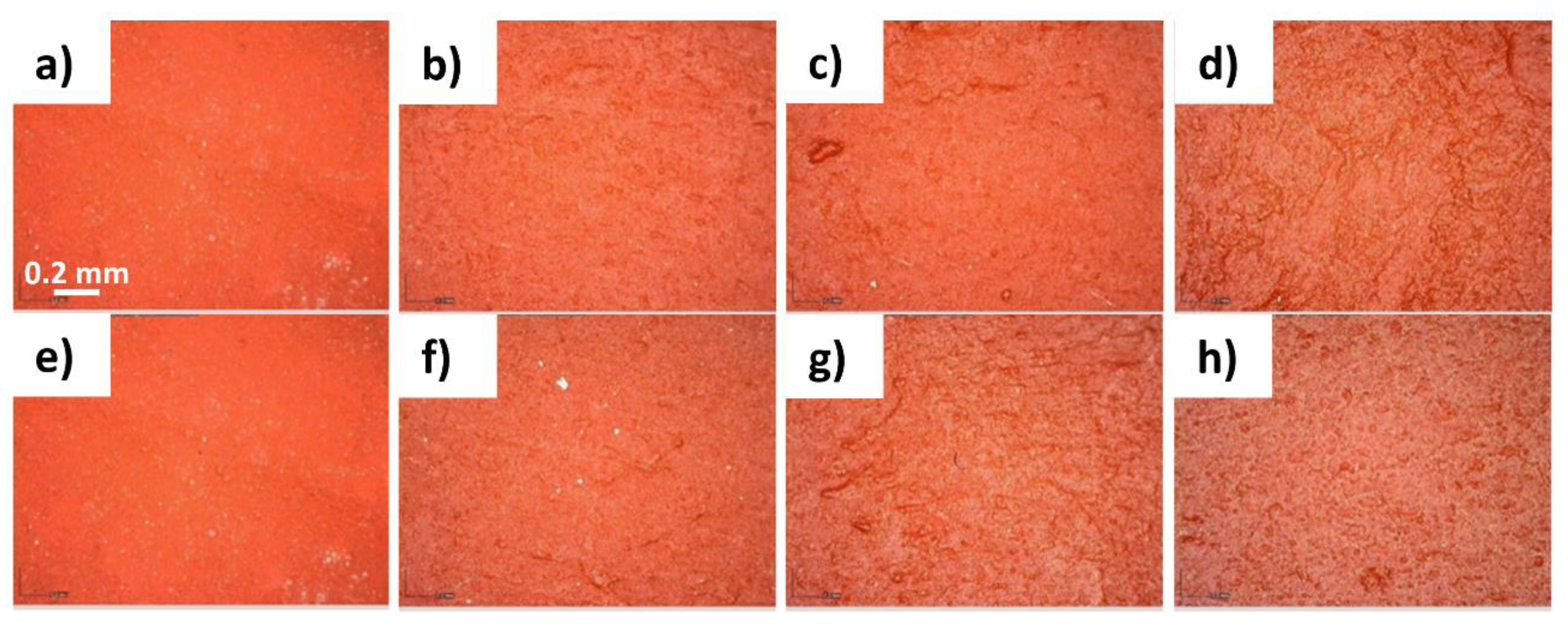
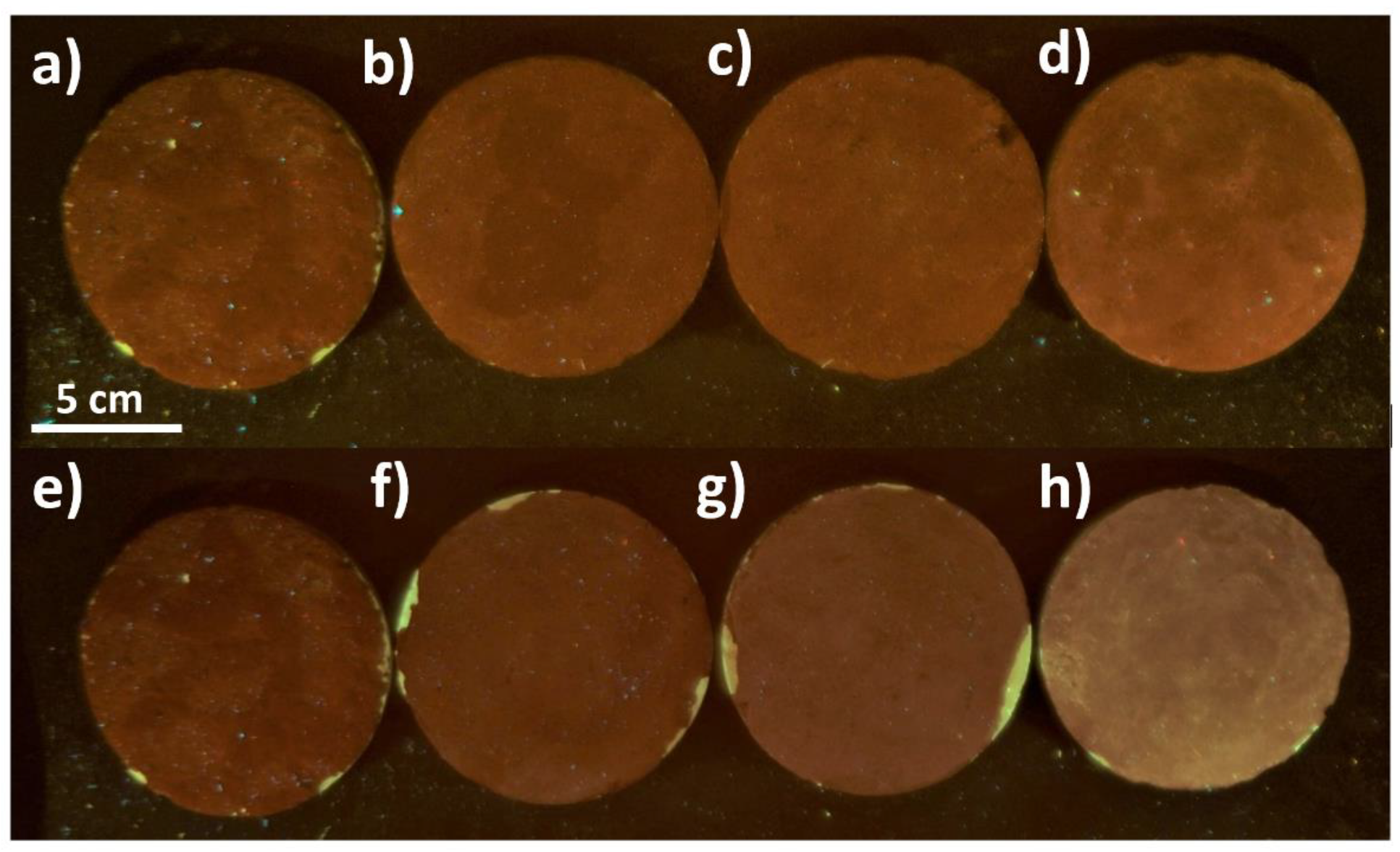
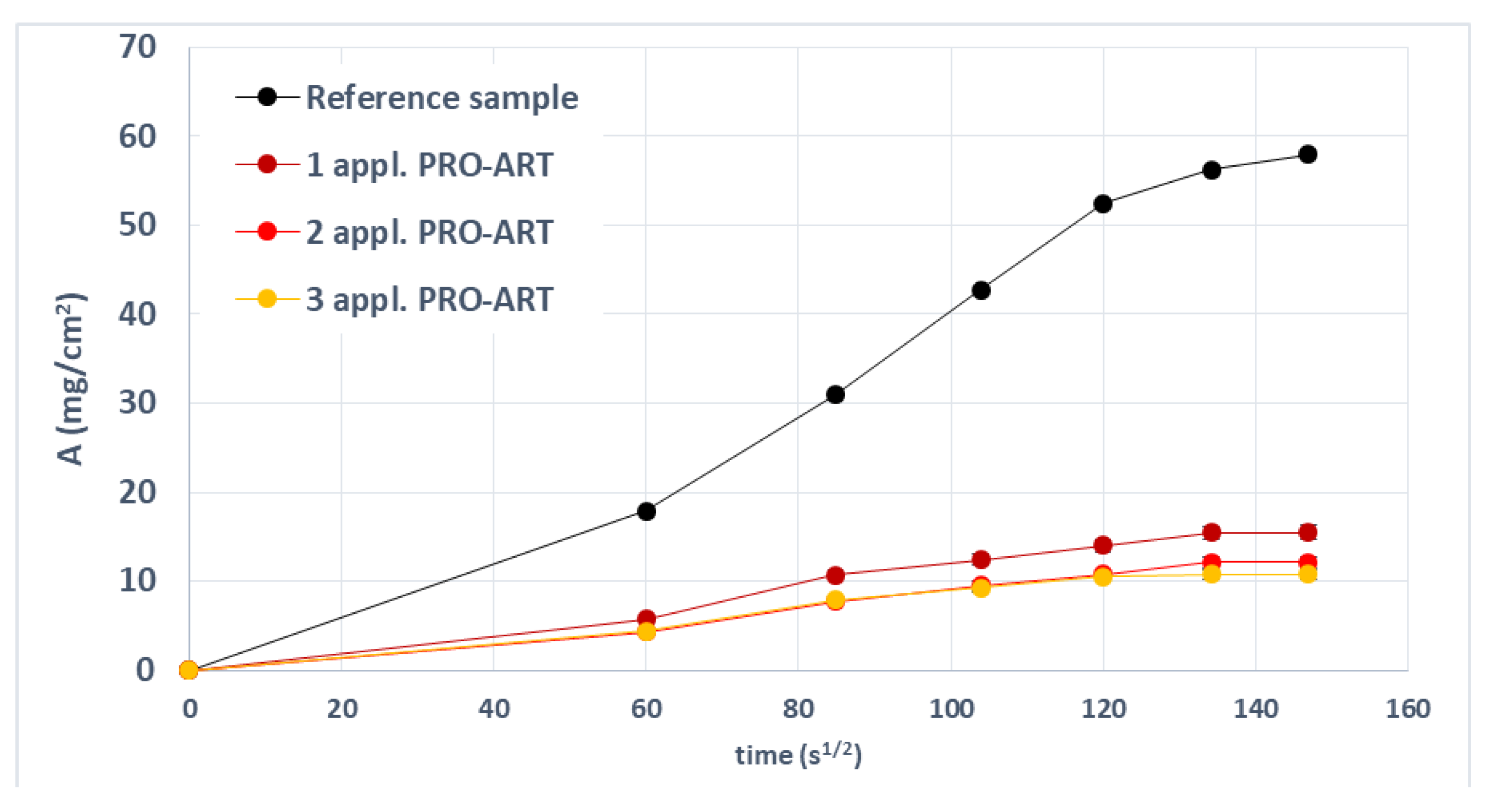
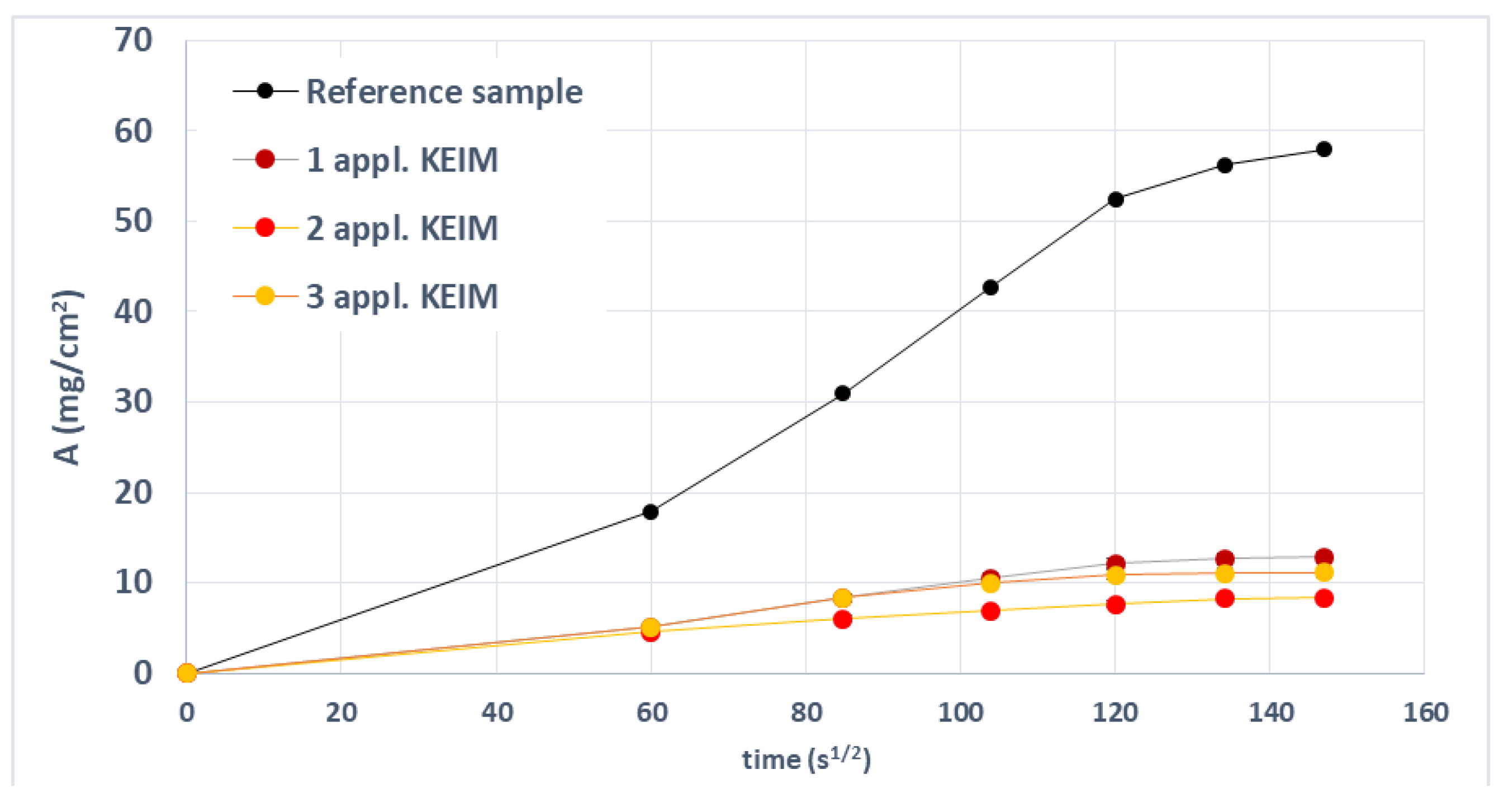
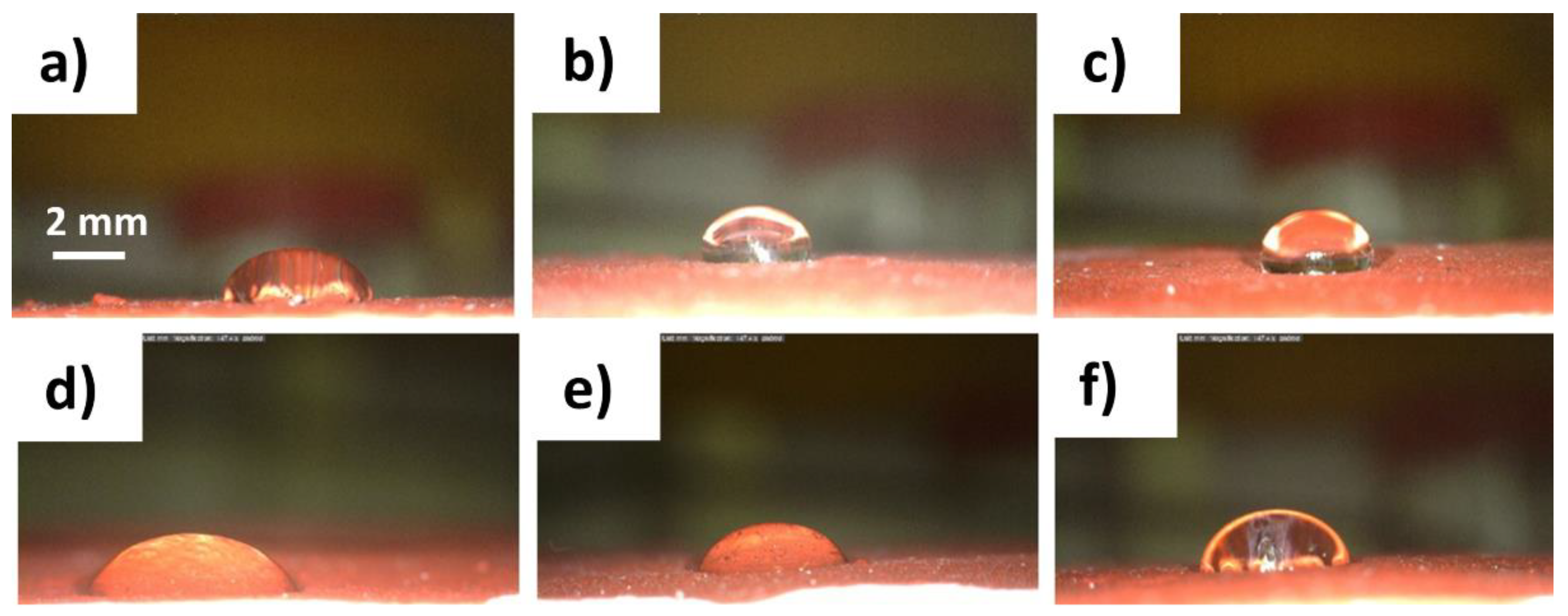
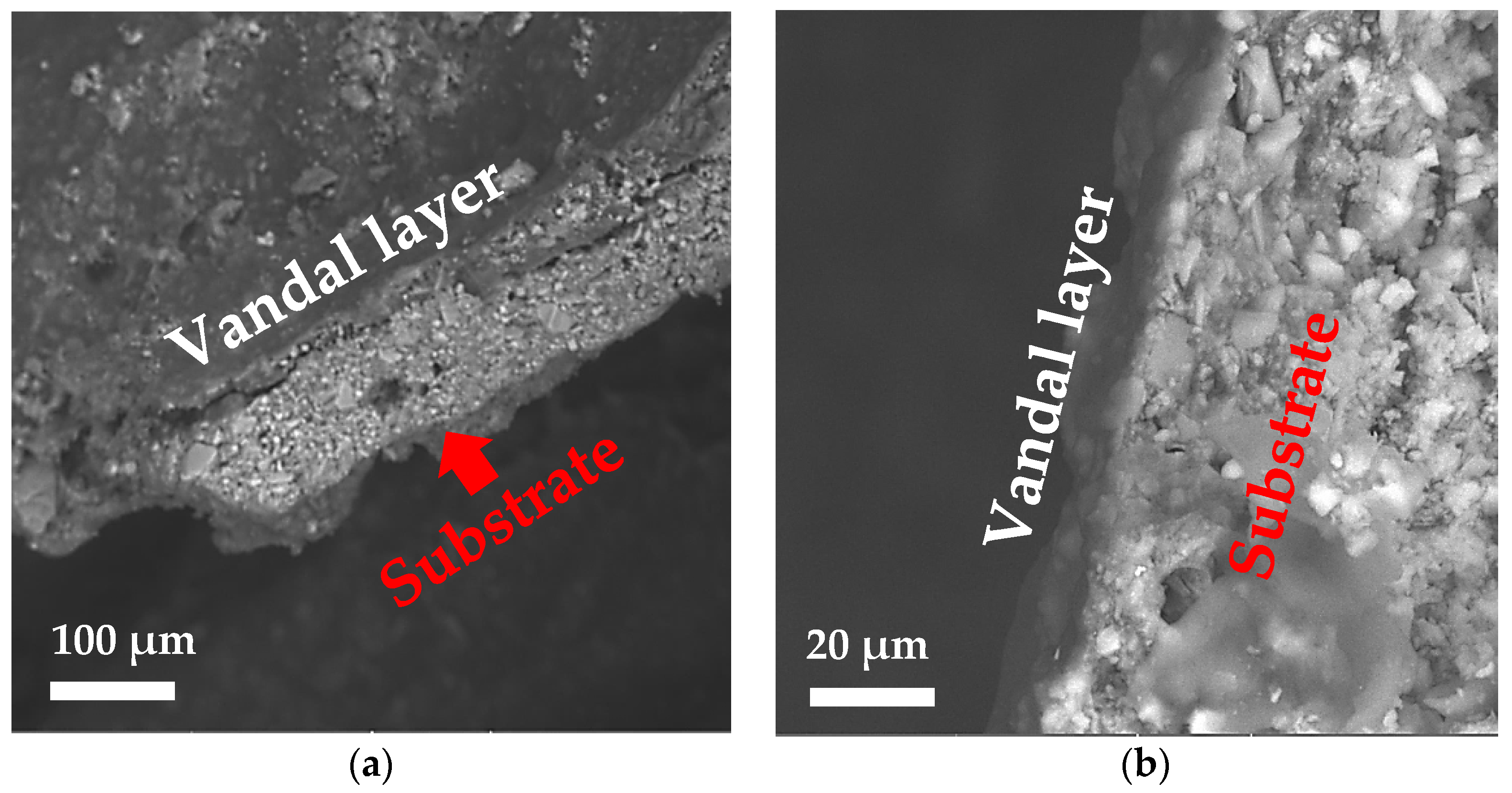
| Composition | Product Name | Producer | Type |
|---|---|---|---|
| Fluorinated acrylic | PRO-ART | YOCOCU/Pelicoat | Permanent |
| Mix of microcrystalline wax and of fluorinated polymers | AG09W | Keim | Sacrificial |
| ∆E (Coated—Untreated Surface) | |||
|---|---|---|---|
| 1 Appl. | 2 Appl. | 3 Appl. | |
| PRO-ART | 1.5 ± 0.3 | 2.2 ± 0.6 | 2.5 ± 1.0 |
| AG09W | 1.6 ± 0.7 | 3.1 ± 0.5 | 4.1 ± 1.2 |
| ID | Contact Angle (°) | ||
|---|---|---|---|
| 1 Appl. | 2 Appl. | 3 Appl. | |
| PRO-ART | 74.5 ± 5.0 | 96.9 ± 5.4 | 105.0 ± 4.6 |
| AG09W | 64.3 ± 7.1 | 72.1 ± 6.3 | 83.3 ± 4.2 |
Publisher’s Note: MDPI stays neutral with regard to jurisdictional claims in published maps and institutional affiliations. |
© 2021 by the authors. Licensee MDPI, Basel, Switzerland. This article is an open access article distributed under the terms and conditions of the Creative Commons Attribution (CC BY) license (https://creativecommons.org/licenses/by/4.0/).
Share and Cite
Macchia, A.; Capriotti, S.; Rivaroli, L.; Ruffolo, S.A.; La Russa, M.F. Protection of Urban Art Painting: A Laboratory Study. Polymers 2022, 14, 162. https://doi.org/10.3390/polym14010162
Macchia A, Capriotti S, Rivaroli L, Ruffolo SA, La Russa MF. Protection of Urban Art Painting: A Laboratory Study. Polymers. 2022; 14(1):162. https://doi.org/10.3390/polym14010162
Chicago/Turabian StyleMacchia, Andrea, Sara Capriotti, Laura Rivaroli, Silvestro Antonio Ruffolo, and Mauro Francesco La Russa. 2022. "Protection of Urban Art Painting: A Laboratory Study" Polymers 14, no. 1: 162. https://doi.org/10.3390/polym14010162
APA StyleMacchia, A., Capriotti, S., Rivaroli, L., Ruffolo, S. A., & La Russa, M. F. (2022). Protection of Urban Art Painting: A Laboratory Study. Polymers, 14(1), 162. https://doi.org/10.3390/polym14010162







